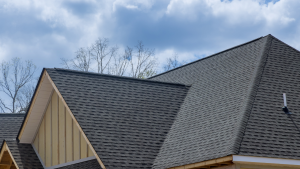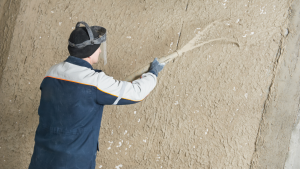Stucco siding is a standard and attractive option for homes in warm areas, but it will need care in the form of repairs and a coating at some point.
People often choose stucco for the outside of their houses since they have been assured that it is pretty durable.
It’s indeed durable; stucco may survive for decades if properly maintained. Here are the instances where elastomeric coating on your stucco siding is needed.
The first step in stucco maintenance is knowing when it’s needed. When in excellent condition, your house is protected from any hazards. However, if a hole or crack develops, it represents a vulnerability in your house’s defenses.
If left unattended, water, insects, and other pests might enter your house via it. Preventing these issues from ever occurring is crucial.
It’s wise to make checking the stucco on your house a routine. Proceed to the outside and inspect the stucco as you stroll around the structure.
- What is the general state of repair like?
- Does the paint have any problems?
As time goes on, the stucco may seem old and worn and need to be repainted. Examine the stucco for holes, fissures, or blisters. Something is broken and needs fixing if it happens.
Reasons For Stucco Damage
Stucco siding restoration begins with determining what caused the damage. That way, you can deal with the issue without worrying about it cropping up again in a few months.
Some potential causes of stucco degradation are discussed below:
Incorrectly applied:
Applying stucco requires many coats. If one of the coats was used incorrectly, the stucco is more likely to fracture and shatter.
Water damage:
Stucco becomes weaker and more likely to crack if water penetrates it. Because of its vulnerability when applied in damp conditions, careful application is required.
Repairing stucco siding requires first ensuring that no water is getting in. This might be through a leaking downspout or an unweatherproofed door or window.
How to Fix Your Stucco
Now that the cause of the damage to your stucco has been identified, you can set about restoring it to its former glory. Fixing it isn’t too tricky, and the repairs you make will hold up for years if you do them properly.
- Chip Away Damage
The damaged stucco must be chipped away first. Considering you already have a hole where it cracked or blistered, it shouldn’t be too harsh. You may dampen the area beforehand to reduce the dust kicked up from the wall.
- Apply Tar Paper
After that, you’ll need to cover the exposed wall with new tar paper. Make sure there is an overlap between the new and old articles before applying this. This will prevent leaks within the house by preventing moisture from penetrating the wall.
- Add Metal Lath
It’s time to attach the new metal lath to the wall by making patches. Your new stucco will be applied to this surface.
- Patch With New Stucco
Now you may plaster over the holes in the wall. Hardware shops often have repair kits, so you may save the hassle of measuring out precise cement amounts.
Do as directed and apply it to the wound. Please don’t rush into painting the repair to match the rest of the house until it has fully cured.
Using Elastomeric Coatings On Your Stucco
After fixing the stucco, it’s time to consider repainting the home. Because there are now no problems with the plaster, this is the ideal moment to paint the whole outside.
Re-painting stucco is typically done every 5-10 years, regardless of whether or not any repairs have been performed. When it comes to painting time, you should use the highest quality paint you can find. Higher-grade color has a greater chance of withstanding the weather.
Investing in higher-quality paint will improve the final product. There is no doubt that this will increase the longevity of your stucco and boost the property’s curb appeal.
Benefits of Coatings
In recent years, elastomeric paint has become one of the most popular options for painting stucco. The name of this painting gives away its main characteristic: it stretches. Because of its flexible construction, it can expand or contract depending on the temperature outside.
Because of this, you can expect to get more years out of a paint job before it needs to be redone, as there is much less risk of the paint cracking as the temperature outside changes. As a paint explicitly developed for stucco, elastomeric paint is a top choice for home exteriors.
Coating Application
Make sure there are no visible nail holes or brush strokes as you apply the paint. Waterproof elastomeric paint requires an uninterrupted surface. It’s not hard to understand why this siding paint is becoming increasingly popular among homeowners. Stucco wear and tear is significantly reduced when waterproof and elastic.
Less siding damage will occur due to water seepage if water is prevented from entering the building. The good news is that as it extends, cracking will decrease.
To get the best results while painting stucco, it’s usually best to use a professional painting crew. They may paint it wholly and evenly, sealing any gaps and making it watertight.
Conclusion
You have gained an understanding of why stucco siding repair is so important. When necessary, make repairs and coat it with an elastomeric coating to prevent further wear and tear.




